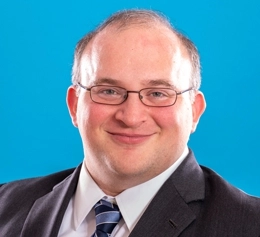When the U.S. Patent and Trademark Office (USPTOUnited States Patent and Trademark Office. See also PTO.) released its Advance Notice of Proposed Rulemaking (ANPRM) related to America Invents Act trial proceedings in April, the agency noted that it is “considering additional measures to address the concerns raised by repeated validity challenges to patent claims (potentially resulting in conflicting outcomes and overburdening patent owners).” In addition, the agency noted that “stakeholders expressed concern that duplicative attacks on the same patent through the IPRIntellectual Property Rights. Usually associated with formal legal rights such as patent, trademark, and copyright. Intellectual property is a broader term that encompasses knowledge, information, and data considered proprietary whether or not it is formally protected. process devalue the patent.” Similarly, in June, when the PREVAIL Act was introduced in the Senate, bill sponsors identified “limit[ing] repeated petitions challenging the same patent” as a key area for reform.
But on July 6, the USPTOUnited States Patent and Trademark Office. See also PTO. released an updated study on the frequency of serial and parallel petitions that indicates multiple challenges on the same patent is not the pressing issue that ANPRM and PREVAIL Act advocates would have you believe. In fact, the agency acknowledges that repeat challenges are uncommon, and in many cases, justified. It’s increasingly clear that the damage caused by the so-called ‘solutions’ would far outweigh any potential benefit from cutting down the number of multiple challenges.
First, the USPTOUnited States Patent and Trademark Office. See also PTO. study addresses serial petitions – a petition filed more than 90 days after the first petition filed by the same petitioner challenging the same patent. The data shows that serial petition attempts made up just 1.7% of all attempted PTABPatent Trial and Appeal Board. Reviews adverse decisions of examiners on written appeals of applicants and appeals of reexaminations, and conducts inter partes reviews and post-grant reviews. The Board also continues to decide patent interferences, as it was known as the Board of Patent Appeals and Interferences (BPAI) before the AIA. challenges during FY22 and that serial petitions were instituted on just 0.3% of all challenges in FY22. This means that there were a grand total of three instituted trials on serial petitions during the most recent fiscal year – down from 46 in FY16. As the agency put it in the study’s executive summary, “In other words, in recent years, serial petition filings have been quite low and successful serial petitions have been rare.”
The USPTOUnited States Patent and Trademark Office. See also PTO. goes on to note that when it has instituted PTABPatent Trial and Appeal Board. Reviews adverse decisions of examiners on written appeals of applicants and appeals of reexaminations, and conducts inter partes reviews and post-grant reviews. The Board also continues to decide patent interferences, as it was known as the Board of Patent Appeals and Interferences (BPAI) before the AIA. trials based on serial petitions, in some cases the patent owner did not contest the serial petition and in other instances the serial petition was in response to claims that the patent owner had newly asserted in district court or at the International Trade Commission. A new petition filed in response to new assertions made during an infringement accusation is completely justified.
Then comes parallel petitions – petitions that are filed 90 days or fewer apart by the same petitioner against the same patent. In FY22, attempted parallel petitions dropped to just 7% of all PTABPatent Trial and Appeal Board. Reviews adverse decisions of examiners on written appeals of applicants and appeals of reexaminations, and conducts inter partes reviews and post-grant reviews. The Board also continues to decide patent interferences, as it was known as the Board of Patent Appeals and Interferences (BPAI) before the AIA. challenges, and they were instituted on only 3.4% of all challenges. As Ropes & Gray’s Scott McKeown recently noted, these metrics include what should actually be called “partial” petitions. If a patent has a large number of claims and a petitioner wants to challenge all of them, they may need to split it up into two separate petitions to conform with agency word count limits. There is nothing duplicative or improper about this process – each claim is only being challenged once. It is just a bug in the system that results in these challenges being categorized as parallel. And in fact, the USPTOUnited States Patent and Trademark Office. See also PTO. is considering an additional rule change allowing petitioners to pay for a higher word count limit in a single petition, which would eliminate the vast majority of these “parallel” petitions. Again, the agency acknowledges, “parallel petition filings and their success rates have notably dropped since fiscal year 2019 and remain low today.”
In the USPTO’s executive summary it quotes the Consolidated Trial Practice Guide which states “there may be circumstances in which more than one petition may be necessary, including, for example, when the patent owner has asserted a large number of claims in litigation or when there is a dispute about priority date requiring arguments under multiple prior artPrior art is the knowledge in the field of a patent that was publicly available before the patent was filed. references” and that “more than one petition by a petitioner may be needed, although this should be rare.”
The multiple petition study confirms that the USPTOUnited States Patent and Trademark Office. See also PTO. has already met this threshold. Serial and parallel petitions have been declining and are rare. The dramatic reforms proposed in the PREVAIL Act and in the ANPRM are unnecessary; they would throw the baby out with the bathwater, with the proposed remedies far out of touch with the scale of the supposed problem they are intended to address.
Ultimately, the USPTOUnited States Patent and Trademark Office. See also PTO. really ought to be considering a single question—do we think this patent is likely valid? If it isn’t, there’s no good justification for leaving it in force.

